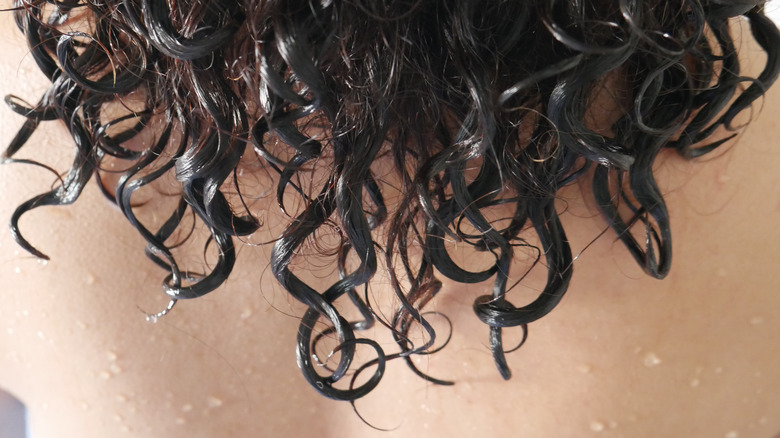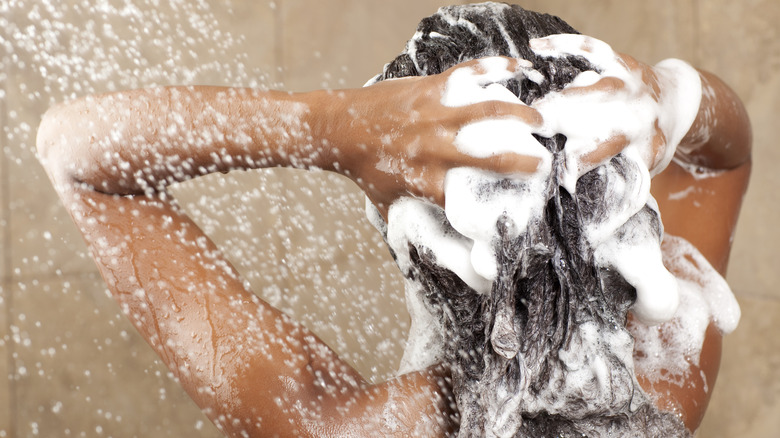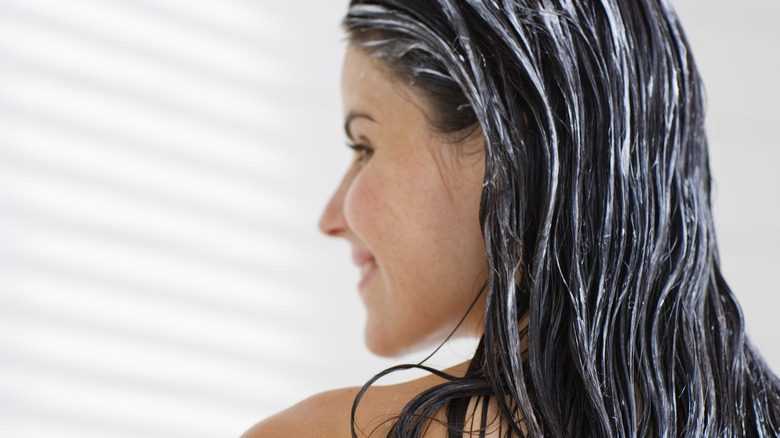Why It's Important That Your Hair Isn't Too Wet When You Apply Conditioner
There's nothing quite like the feeling of silky, smooth hair after a wash day. Conditioner is one of the things that makes this feeling possible, and it's one step in your routine that you don't want to skip. While shampooing cleanses and removes oil, conditioner restores your hair's moisture, leaving it softer and more manageable than washing alone. But even if you do it frequently, you might not be reaping all the benefits your conditioner has to offer.
Traditional conditioners are applied on wet hair, often in the shower after shampooing. If you've been finding that your hair still lacks moisture and softness even after you condition it, it could be because your hair is too wet when you apply the conditioner. Along with using too much conditioner, this is a common mistake people make when washing and conditioning their hair. But all you have to do is wring out the excess water so your conditioner can do its job and give you the luscious hair you desire.
Conditioner absorbs best when your hair is damp — not soaking wet
After you've rinsed out your shampoo, make sure you wring out your hair before going in with your conditioner. Your hair should be damp but not sopping wet. Hairstylist and L'Oréal Professional global ambassador Min Kim explained to Glamour Magazine, "Hair is a fibre; squeezing out the excess water before applying conditioner allows the conditioner to penetrate instead of rolling off hair that's saturated with water." Think of it like trying to soak up a spill with a sponge that's already soaking wet; it just doesn't work. The same goes for your hair and conditioner.
This is true for leave-in conditioners as well, which can be left in the hair without rinsing them out. These work best when the hair is damp. Leave-in conditioners are especially helpful if you have fine hair, curly hair, or if your hair has become damaged or dry. New York City stylist Bronwen Robinson told Glamour, "Generally, sprays are good for finer hair, creams and lotions are good for medium to coarse textures, and serums may need to be tested."
Give your hair time to absorb the conditioner before rinsing out
With shampoo, you can immediately rinse it out after you've lathered and scrubbed. Conditioner, on the other hand, works best when it has a couple of minutes to soak in your hair and restore some of that lost moisture from washing. So give it a few minutes after applying the conditioner to your hair to let it do its thing. The time depends on the product you're using, and conditioners will often have instructions on the bottle about how long to leave it in, whether it's a typical rinse-out conditioner or a deep treatment.
Remember to apply conditioner only to your ends and not your roots. Putting it on the scalp will make your hair feel weighed down and greasy. Just one or two pumps of conditioner can go a long way, depending on the length, thickness, and texture of your hair. When you do rinse it out, make sure you've gotten all of the product out to avoid any build-up or residue.


